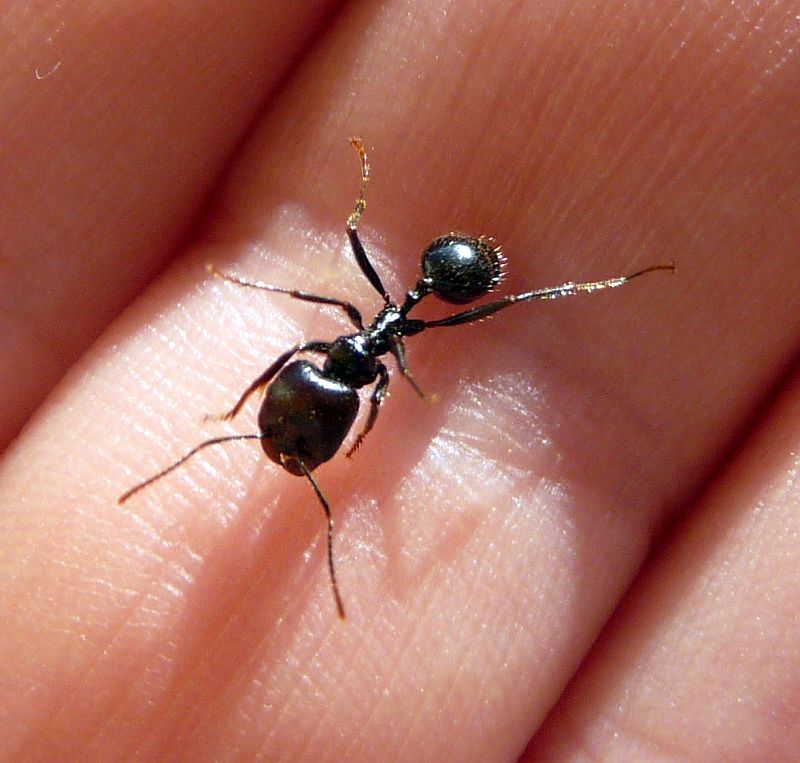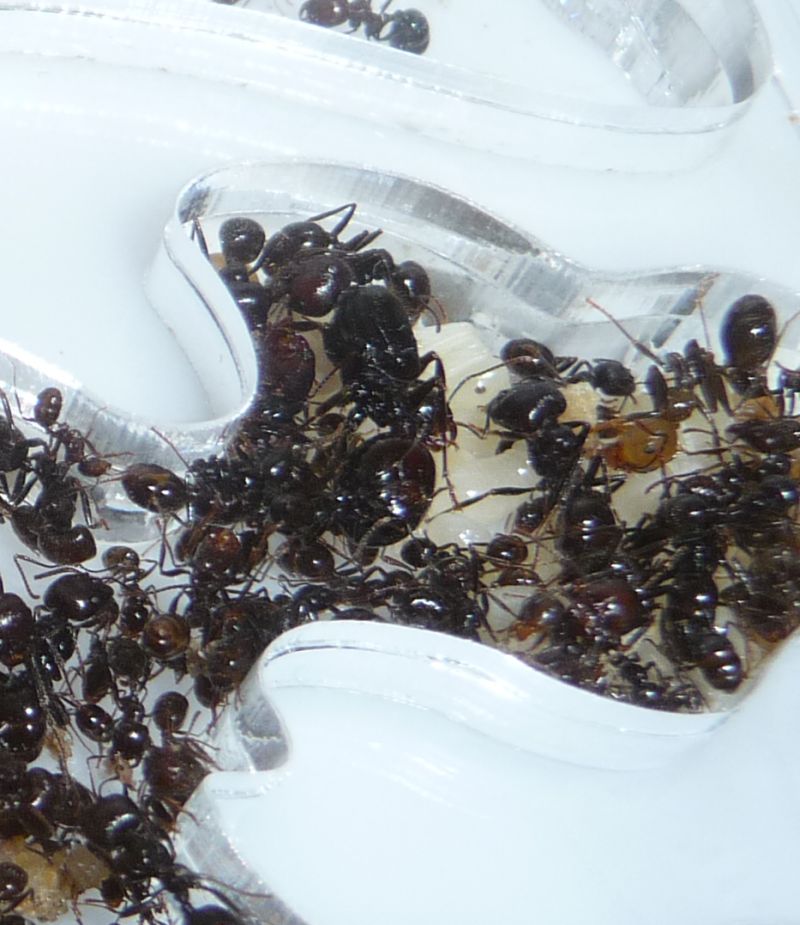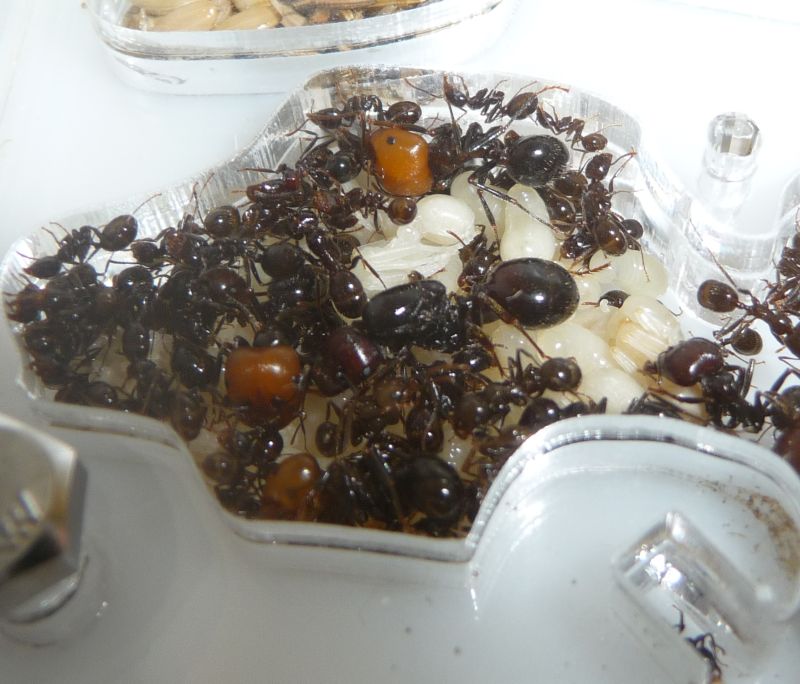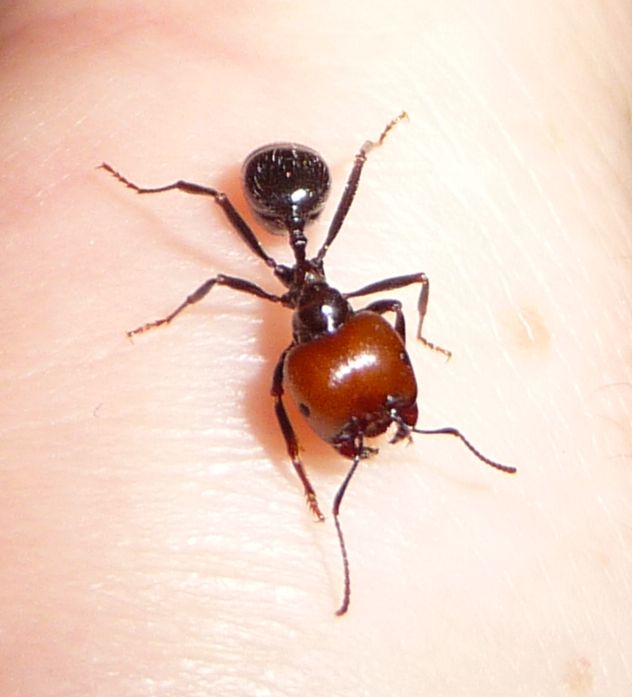If tetras willingly inbreed that will be a big discovery
Tetras are pleometrotic.

If tetras willingly inbreed that will be a big discovery
Tetras are pleometrotic.
The ants go marching.
Currently keeping:
The ants he has here are NOT Tetramorium.Tetras are pleometrotic.
If tetras willingly inbreed that will be a big discovery
Cool observations! I bet the queen laid that egg once the worker eclosed, so that the queen would have support enough to raise it. Maybe this species is used to overwintering with the mother colony, and laying eggs there for a bit, or at least founding with other queens as support? That could explain this behaviour.
Of course, it could just be a trophic egg or something. Guess we'll see with your next update!
Edit: Does anyone have an ID for the species? We're still talking about a mysterious species so far, but if we can figure this out, the behaviours might be ironed out a bit better.
Edited by Stubyvast, October 9 2025 - 3:02 PM.
Manica invidia (1 queen, ~200 workers)
Manica invidia (1 colonies, 1 queens plus 3 workers)
Lasius niger (single queen, ~200 workers - naturalistic, predatory set-up)
Lasius americanus (1 colony, ~10 workers)
Tetramorium immigrans (3 colonies, 3 queens, ~ five workers each | 1 colony, 1 queen, ~1200 workers)
Formica aserva (aserva queen, ~15 Formica neorufibarbis workers)
"And God made...everything that creeps on the ground according to its kind.
And God saw that it was good." - Genesis 1:25
Hello AntRealm;
This season I observed some interesting behaviour in one of my Tapinoma sessile colonies that you might find interesting. They usually have multiple queens in a nest.
These ants often produce some alates in midsummer; they can be seen running around the outworld area on warm days. Males can often be seen practicing their take-offs and landings while female alates seem to just run around. However, one day as I watched them, I noticed a female sitting in one spot, beating her wings in sort of a mock flying behaviour. As I watched, a male that had been practicing his take-offs landed on the female and it appeared to me that he mated with her. This may be one way that they mate without actually taking a nuptial flight.
I usually see alates running around the outworld for a week to ten days and then gradually they're seen less and less frequently, perhaps culled by the colony. Young mated dealate queens with a few workers will often find a place, separate from the main colony, where the newly mated queen will begin to lay her eggs. Old queens are replaced by young ones which could make a colony able to continue indefinitely.
You might find the information in this thread interesting as well breeding/mating in captivity - General - Ants & Myrmecology Forum
RPT
I don’t think they are Messor.It looks like Messor perhaps?
Edited by AntRealm, October 10 2025 - 1:04 AM.
It looks like Messor perhaps?
Now that you mention it, it does look indeed similar to my own Messor.
But they do not look exactly like my Messor barbarus- colors, mandibles and body hairs do not match.
Do we know where OP is from?
Has OP tried to feed seed?
Messor will go mental for seed, and stop doing anything else, even colony defense has low priority than "Seed!"
I do not have perfect pictures of my Messor queens, but here are a few in comparison.
This is a Messor barbarus major

And these are Messor barbarus queens:


There is a similarity.
I don’t think they are Messor.It looks like Messor perhaps?
Their size is about the same as Camponotus, and they also have majors.
As do my Messor barbarus. My Messor barbarus are indeed bigger in size than the small Camponotus I keep and the majors are massive.

Thanks for the suggestion.Now that you mention it, it does look indeed similar to my own Messor.
It looks like Messor perhaps?
But they do not look exactly like my Messor barbarus- colors, mandibles and body hairs do not match.
Do we know where OP is from?
Has OP tried to feed seed?
Messor will go mental for seed, and stop doing anything else, even colony defense has low priority than "Seed!"
I do not have perfect pictures of my Messor queens, but here are a few in comparison.
This is a Messor barbarus major
And these are Messor barbarus queens:
There is a similarity.
Wow, this is so cool! I’ll definitely check out that topic, thanks for the suggestion!Hello AntRealm;
This season I observed some interesting behaviour in one of my Tapinoma sessile colonies that you might find interesting. They usually have multiple queens in a nest.
These ants often produce some alates in midsummer; they can be seen running around the outworld area on warm days. Males can often be seen practicing their take-offs and landings while female alates seem to just run around. However, one day as I watched them, I noticed a female sitting in one spot, beating her wings in sort of a mock flying behaviour. As I watched, a male that had been practicing his take-offs landed on the female and it appeared to me that he mated with her. This may be one way that they mate without actually taking a nuptial flight.
I usually see alates running around the outworld for a week to ten days and then gradually they're seen less and less frequently, perhaps culled by the colony. Young mated dealate queens with a few workers will often find a place, separate from the main colony, where the newly mated queen will begin to lay her eggs. Old queens are replaced by young ones which could make a colony able to continue indefinitely.
You might find the information in this thread interesting as well breeding/mating in captivity - General - Ants & Myrmecology Forum
RPT
The ants he has here are NOT Tetramorium.
Tetras are pleometrotic.If tetras willingly inbreed that will be a big discovery
I know, just saying that it would be impossible for tetras to inbreed.
The ants go marching.
Currently keeping:
they really look like structor group messor
where are they collected from?
Edited by AntRealm, October 14 2025 - 2:22 PM.
Yeah, they’re Messor ants.they really look like structor group messor
where are they collected from?
0 members, 0 guests, 0 anonymous users